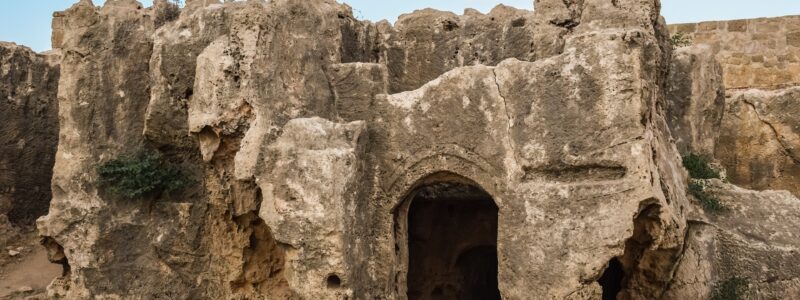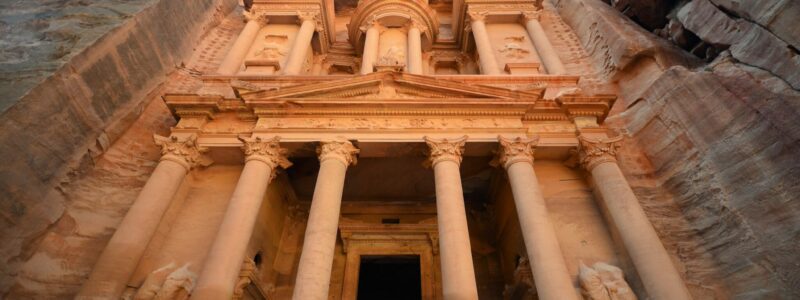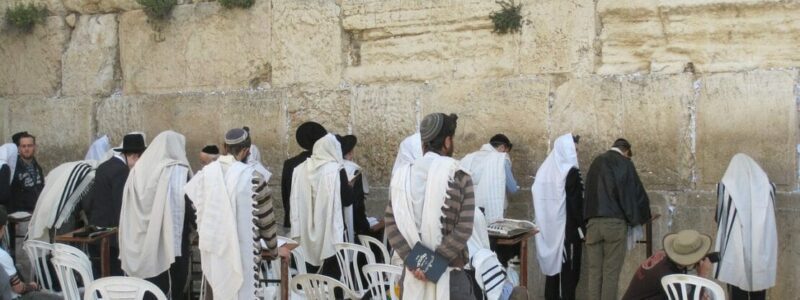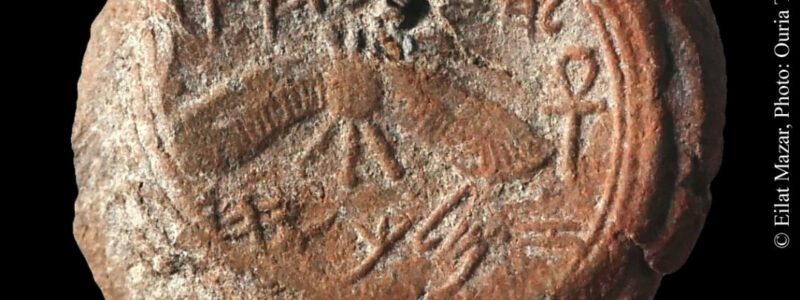Ancient Earthquake
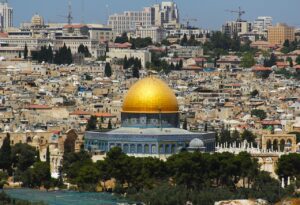
Jerusalem, where archaeologists found evidence for an ancient earthquake.
There have been many ancient earthquakes described in the Scriptures. Probably the most well-known is the one that occurred during the crucifixion of Christ. However, another earthquake described in Scripture is less well-known but strong enough to have altered history. This earthquake disrupted history during the eighth century BC and is mentioned in the Biblical Texts of Amos and Zechariah and with colorful detail by Josephus.
The Israel Antiquities Authority and the Ir David Foundation found evidence of this earthquake when they evaluated the ruins of the East Jerusalem neighborhood of Silwan. (Silwan (also known as Siloam) is mentioned in Scripture as the place where Christ healed the man who was blind from birth). The researchers considered other causes for the destruction they bound at Silwan, including fire and destruction from war. There is no evidence of ash suggesting a fire did not destroy the city. They also evaluated the possibility that the destruction was isolated in that one neighborhood and not a generalized disruption attributable to an earthquake.
Joe Uziel, an archaeologist, involved with the study, noted,
To prove that this doesn’t involve one building that sustained an isolated trauma, we compared it to other sites, both in Jerusalem and at other places where we also see this layer, so that we can make the connection and say that this isn’t an isolated event but rather something more widespread.
University Professor Israel Finkelstein, who was not involved in the investigation, noted,
destructive earthquakes in Jerusalem are possible, as shown by the well-recorded earthquake of 1927. The early layer of the book of Amos includes materials which relate to the eighth century and hence it is possible that a devastating earthquake left a strong impression and was recorded.
Documenting the Ancient Earthquake
The Times of Israel documents these events noting that decades of careful research by archaeologists and seismologists have proven the historical veracity of the earthquake. This particular event spread throughout the Kingdom of Judah about 2800 years ago.
The article noted that finding evidence for an ancient earthquake in Jerusalem is a real game-changer.
It’s not that per see we’re providing here a way to date, but rather an anchor that we can compare what comes before and what comes after.
They noted,
if I know I should be looking for some kind of destructive event in the middle of the eighth century then I know what comes before and after.
They also noted that this particular destructive event included other areas where other teams were investigating similar destruction. The authors note,
I feel pretty secure about it: one reason is the archaeological evidence, which at other sites has been found dating to the same time period, and two is the archaeological evidence at other sites which very clearly shows ‘earthquake’ and not military acts of destruction,
Geological work on sediments in the Dead Sea region by another team from Hebrew University’s Institute of Earth Sciences indicates there were likely two large earthquakes in Israel in the mid-eighth century. Whether it was one earthquake with aftershocks or a series of temporally connected earthquakes is not of too much concern. Often one quake might trigger a series of related quakes in a domino effect of progressive destruction.
This destruction was not confined to just Israel. The earthquakes epicenters were located in the Jordan valley, with ancient cities in what is now the modern country of Jordan suffering even more destruction than in their neighboring country.
There are specific ways that city walls collapse in an earthquake due to “waves of energy that hit after an earthquake.” This pattern of destruction is different from that caused by the destruction of a city from military conquest. For example, the city of Gath was known to have been conquered by Hazael in the late eighth century BC. However, the artificial destruction of Gath recently was confirmed only a small section of the city wall was destroyed, likely allowing the invading Syrian army to enter the city.
Archaeologists contend they were not surprised about finding the earthquake in Jerusalem. Professor Aren M. Maeir noted,
I’m not surprised at all about these finds in Jerusalem. First of all, mid-eighth century BC earthquakes are mentioned/hinted to in the contemporary books of Amos, Isaiah, and the much later Zecharia. Second, Jerusalem is much closer to the assumed epicenters (Jordan Valley) of earthquakes than Gath.
Josephus and the Ancient Earthquake

Josephus – By William Whiston (originally uploaded by The Man in Question on en.wikipedia.org) – https://sites.google.com/site/josephuspaneas/, Public Domain, Link
Josephus was an ancient Jewish historian who wrote at the end of the first century AD who is important in our determination of Herod the Great’s death date. He also mentions the great earthquake which occurred during the time of King Uzziah. This king started as a righteous ruler but let the pride of riches lead him astray. Josephus notes concerning the downfall of Uzziah,
While Uzziah was in this state, and making preparation [for futurity,] he was corrupted in his mind by pride, and became insolent; and this on account of that abundance which he had of things that will soon perish; and despised that power which is of eternal duration: (which consisted in piety towards God, and in the observation of the laws:) so he fell by occasion of the good success of his affairs; and was carried headlong into those sins of his fathers, which the splendour of that prosperity he enjoyed, and the glorious actions he had done, led him into: while he was not able to govern himself well about them. Accordingly when a remarkable day was come, and a general festival was to be celebrated, he put on the holy garment, and went into the temple to offer incense to God upon the golden altar; which he was prohibited to do by Azariah the High Priest, who had fourscore Priests with him, and who told him, that it was not lawful for him to offer sacrifice: and that “None besides the posterity of Aaron were permitted so to do.” And when they cried out, that he must go out of the temple, and not transgress against God, he was wroth at them, and threatened to kill them, unless they would hold their peace. In the mean time a great earthquake shook the ground, and a rent was made in the temple, and the bright rays of the sun shone through it; (22) and fell upon the King’s face; insomuch that the leprosy seized upon him immediately. And before the city, at a place called Eroge, half the mountain broke off from the rest on the west, and rolled it self four furlongs, and stood still at the east mountain; till the roads, as well as the King’s gardens, were spoiled by the obstruction. Now as soon as the Priests saw that the King’s face was infected with the leprosy, they told him of the calamity he was under, and commanded that he should go out of the city, as a polluted person. Hereupon he was so confounded at the sad distemper, and sensible that he was not at liberty to contradict; that he did as he was commanded; and underwent this miserable and terrible punishment for an intention beyond what befited a man to have, and for that impiety against God which was implied therein. So he abode out of the city for some time, and lived a private life: while his son Jotham took the government. After which he died with grief and anxiety at what had happened to him; when he had lived sixty eight years, and reigned of them fifty-two.22 And was buried by himself in his own gardens.
Real Importance of the Ancient Earthquake
Scripture students ascribe great importance to the actual documentation of an earthquake event reported in Scripture. These recent findings help to substantiate the Biblical narrative and the reliability of the Scriptures.
Archaeologists have a different take on the importance of verifying a widespread earthquake event in ancient Israel. The report,
provides an archaeological anchor for Jerusalem, which can now begin to be developed for the relative dating of assemblages before and after this anchor. In this sense, the Amos earthquake may serve Jerusalem’s archaeology in the same manner as the destruction of Lachish in 701 BC.
The earthquake event serves to date a particular archaeological lay throughout Israel, with findings below the earthquake strata being older than the earthquake in 850 BC. In addition, the establishment of an archaeological layer associated with the earthquake provides a new way of dating ancient events in the layered strata throughout Israel. It can verify other means of dating, such as pottery and carbon-14 data.
Establishing an earthquake event in ancient history is an exciting time for archaeologists trying to decipher ancient historical sites as it allows another means of dating these archaeological sites and further verification of other methods.
Summary
Modern archaeology continues to affirm the Scriptures. Recently, the discoveries at Gath substantiate the violent end of that city by the invading Syrian forces. Just before their destruction, the city was destroyed by a large earthquake.
Evidence for this earthquake has now been substantiated in Israel and the neighboring country of Jordan, where the quake was stronger.
It was a very destructive event, one that leveled cities and gets to be included in Scripture. Natural destructive events are fairly common throughout the world, but this was apparently a huge and destructive event.
Archaeology continues to support the historicity of Scripture.

